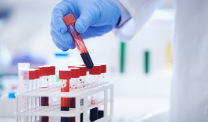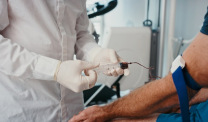Researchers Find Link Between Vitamin D and Asbestosis
Research & Clinical TrialsWritten by Suzanne Dixon, MPH, MS, RDN | Edited by Walter Pacheco

Exposure to asbestos is the biggest risk factor for developing asbestosis, one form of interstitial lung disease (ILD).
However, not all people with a known history of asbestos exposure develop ILD.
A study published June 19 in The Journal of Nutrition has identified one possible reason why: Differences in vitamin D levels.
A research team led by Dr. Erin Michos, associate professor of medicine at the Johns Hopkins University School of Medicine, analyzed 10 years of data on 6,302 adults enrolled in the Multi-Ethnic Study of Atherosclerosis (MESA).
“Vitamin D deficiency is independently associated with subclinical ILD and its progression,” the authors wrote.
This type of study cannot prove cause and effect, though it does suggest vitamin D plays an important role in the development of asbestosis and other ILDs.
Michos noted vitamin D deficiency might now be added to the list of factors playing a role in ILD processes.
Fatty cold-water fish — such as salmon, tuna, swordfish and sardines — are among the best natural sources of vitamin D, according to the National Institutes of Health, Office of Dietary Supplements.
Dairy foods, cereals and orange juice fortified with vitamin D also are listed among foods providing plenty of this nutrient.
Blood Tests, Lung Scans and Time
The average age of MESA participants was 62 years. The study group was 53 percent female, 39 percent white, 27 percent black, 22 percent Hispanic and 12 percent Chinese.
At study enrollment, each person provided blood samples. This allowed for vitamin D testing and other important blood work.
Partial and full-lung CT scans were available for study participants for at least one and up to five of the study visits over the 10-year period.
Vitamin D Levels Poor in Two-Thirds of Study Participants
About one-third of study participants were vitamin D deficient. Another one-third had “intermediate” vitamin D levels.
Intermediate refers to blood levels not high enough for optimal health, but not low enough to qualify as vitamin D deficient.
Only a third of the group had adequate or “healthy” levels of vitamin D.
These results point to a startling fact: Roughly 4,160 MESA participants were not getting enough vitamin D, either from regular sun exposure or from their diets.
Poor Vitamin D Status Linked to ILD and Its Progression
People with vitamin D deficiency exhibited larger volumes of bright spots on CT scans compared with study participants with normal vitamin D levels. Bright areas are an indication of possible interstitial lung damage.
After 10 years of follow up, people with vitamin D deficiency were 50 to 60 percent more likely to have evidence of lung damage on CT scans.
The study authors took into account other factors that can affect lung disease risk, including past and current tobacco use, obesity, physical activity levels, high cholesterol, diabetes and high blood pressure.
Even after these statistical adjustments, the connection between vitamin D deficiency and greater risk of ILD remained.
Will Taking Vitamin D Reduce My Risk of Asbestosis?
This study was not designed to explain whether supplementing with vitamin D will protect against asbestosis. This new research also does not examine if taking vitamin D will slow down the progression of existing ILD.
Still, there are a lot of good reasons to pay attention to the sunshine vitamin. Regardless of whether a person has been exposed to asbestos, no one should ignore very low vitamin D levels.
People already diagnosed with an asbestos-related cancer may benefit from a quick check of vitamin D levels.
According to the medical literature, up to 80 percent of people with cancer may be vitamin D deficient.
People can ask for a simple and relatively inexpensive blood test at their next doctor’s visit to find out if they are getting enough vitamin D.
If blood levels come back below normal, a physician or dietitian can help them find the safest and most effective way to remedy vitamin D deficiency.






